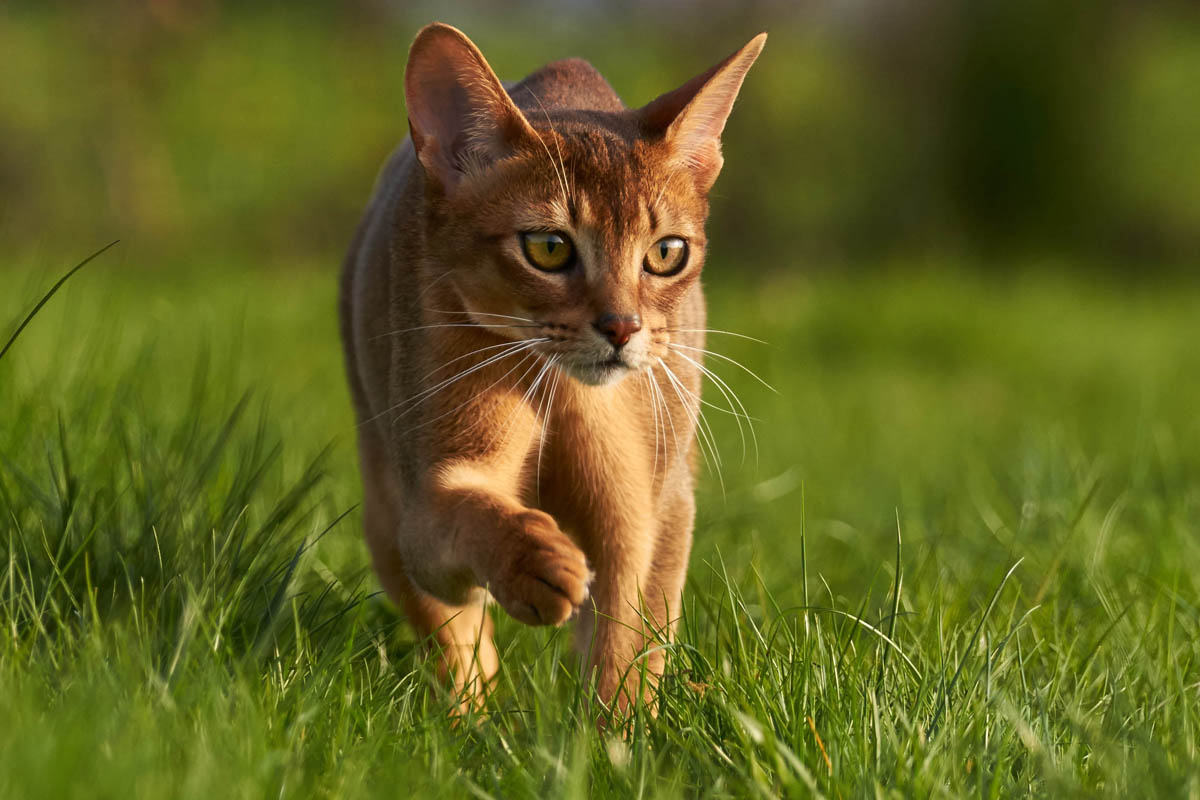What is a cruciate ligament rupture?
The cruciate ligament is a pair of ligaments that form an X shape within the knee of the hind leg. These ligaments attach the femur (thigh bone) with the tibia (shinbone), the long bones above and below the knee joint (which is known as the stifle joint in quadruped/four-footed animals).
Four primary ligaments hold the knee joint together and keep it stable:
- Anterior medial and lateral collateral ligaments run down the inside and outside of the knee.
- Anterior (cranial) and posterior (caudal) cruciate ligaments sit within the knee joint.
The cruciate ligament’s role is to provide stability to the knee joint, preventing twisting of the bones or hyperextension of the knee joint.

Causes
A cruciate ligament rupture can occur due to a traumatic event that results in a severe twisting or pivoting of the knee joint or slow degeneration of the joint due to age. When the ligament ruptures, the entire joint becomes unstable, and the leg bones can easily move out of place. It is quite common for damage to occur to other parts of the joint, such as the meniscus at the same time as a cruciate rupture.
Ruptures may be partial or full (complete). A partial rupture means only one of the two cruciate ligaments has been torn. A full rupture occurs when both the cranial and posterior cruciate ligaments tear.
There is a higher incidence of cruciate ligament ruptures in cats who are overweight.
Symptoms
Cats with a ruptured cruciate ligament most commonly present with rear limb lameness. The cat may also hold the affected limb off the ground. Symptoms can be sudden onset if an injury or trauma is the cause or slowly progress over some time.
Accompanying symptoms:
- Swelling
- Pain
- Decrease in activity
Diagnosis
The veterinarian will perform a complete physical examination of your cat and obtain a medical history from you.
Questions may include:
- Has the lameness occurred suddenly or has been slow and progressive?
- Is the cat lame all the time or does the lameness come and go?
- Has the cat been in a recent trauma such as a fall?
Physical evaluation:
The veterinarian will watch the cat walk as well as carefully perform an orthopedic examination which includes a physical examination of the affected limb for swelling as well as examining the physical structures around the joint.
Careful movement of the joint through several motions including a cranial drawer test and a tibial compression test which can help diagnose a cruciate ligament rupture. This test may need to be carried out under anesthesia. The non-affected limb will be evaluated for comparison.
Radiographs (X-rays) of both the affected and non-affected leg to determine if a cranial rupture is evident as well as to look for signs of arthritis.
Treatment
Non-surgical:
- Treatment may include exercise restriction for 6-8 weeks.
- As obesity can be a significant factor, weight loss will be necessary for overweight cats.
- Anti-inflammatory drugs and painkillers can be prescribed at this time.
The veterinarian will need to monitor your cat for signs of improvement. If there is no change or the condition becomes worse surgical treatment will be necessary. Drawbacks of a wait and see approach is that there is a very good chance the affected stifle will develop arthritis in the future.
Surgical:
There are several methods to stabilise the joint surgically, which your veterinarian may perform, or he may refer you to a specialist. The meniscus will also be evaluated for tears as this is a common concurrent injury in cats with a cruciate ligament rupture.
Aftercare
Loss of appetite is common after surgery due to anesthesia or painkillers. Offer him strong-smelling food such as tuna or cooked chicken breast, or feed by hand. If he continues to refuse food, speak to your veterinarian.
Your veterinarian will immobilise the stifle joint for at least two weeks to allow it to repair. Strict cage rest is necessary at this time. He may recommend very short walks in a harness to encourage your cat to use the limb. Do not let him run or jump for at least 12 weeks post-surgery. Do not let the cat outside (unless on a harness) at this time.
Your veterinarian will prescribe painkillers for the first 10-14 days post-surgery.
Be watchful for signs of infection including swelling, redness, oozing fluid or odour.
Follow-up visits will be necessary post-surgery to remove or change bandages, remove staples or stitches and evaluate the affected joint.

